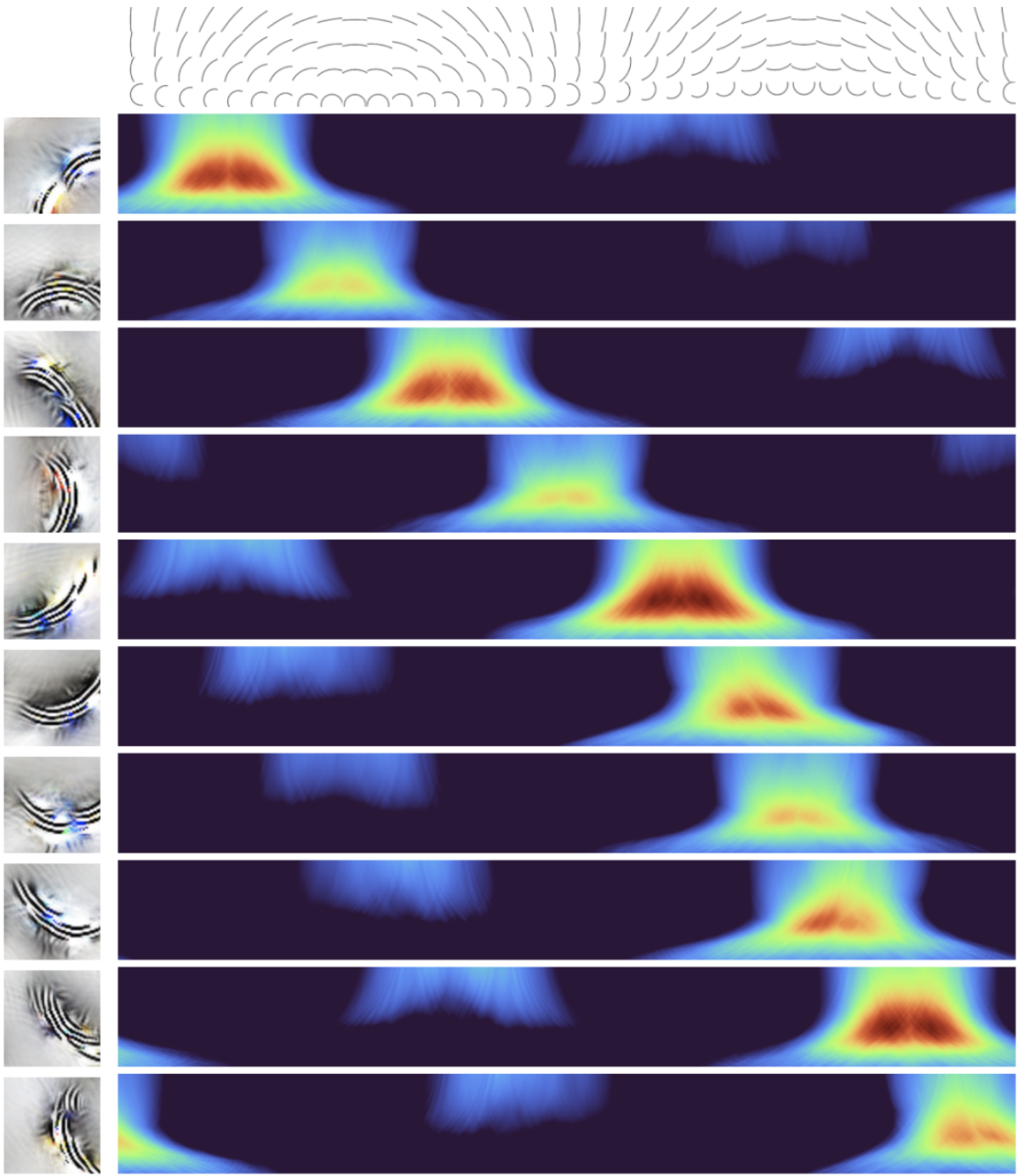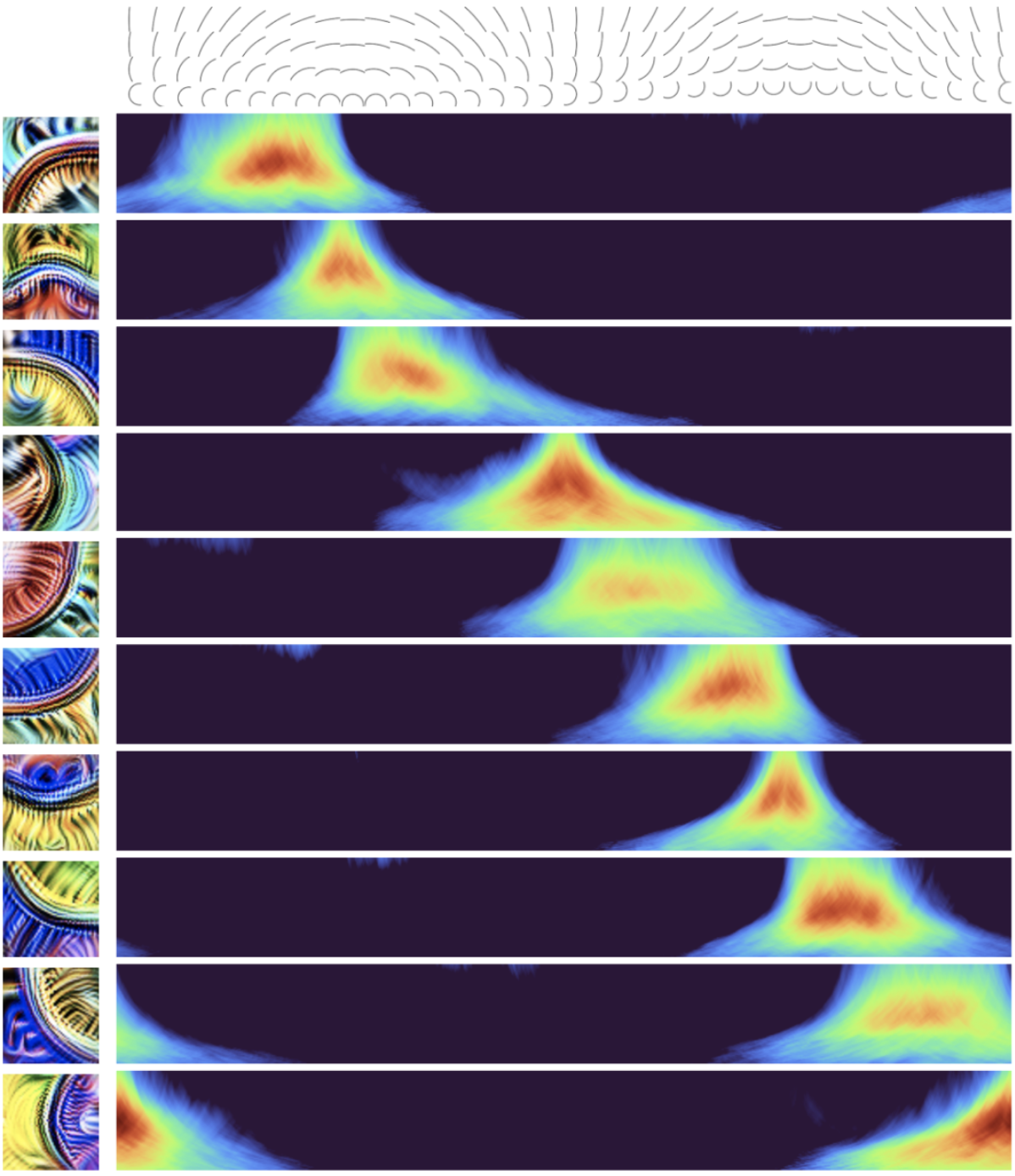Curve Circuits
We reverse engineer a non-trivial learned algorithm from the weights of a neural network and use its core ideas to craft an artificial artificial neural network from scratch that reimplements it.


We reverse engineer a non-trivial learned algorithm from the weights of a neural network and use its core ideas to craft an artificial artificial neural network from scratch that reimplements it.


As we mentioned in Curve Detectors, our first investigation into curve neurons, it’s hard to separate author contributions between different papers in the Circuits project. Much of the original research on curve neurons came before we decided to separate the publications into the behavior of curve neurons and how they are built. In this section we’ve tried to isolate contributions specific to the mechanics of the curve neurons.
Interface Design & Prototyping. Many weight diagrams were first prototyped by Chris during his first investigations of different families of neurons in early early vision, and some of these were turned into presentations. Nick extended them for use in this paper. Chris designed and implemented the decomposed feature visualization figure in the first section. Many of the other interfaces were designed by Nick with the help of Shan and Chris. In particular, Shan helped to design the figure showing how the different families of early vision connect leading up to the curve family.
Conceptual Contributions. The earliest understandings of how curve neurons are built from lines and edges came from Chris, and the details came from further investigation by Nick. Nick investigated the line families in detail, including finding cliff line neurons and studying they are used. Nick studied through neuron families in the early layers, studying how shape neurons incrementally incorporate increasingly sophisticated texture and cosmetic neurons, working towards the neuron families diagram in the first section. The artificial artificial neural network was done by Chris and Nick expanded on it for use in the article. Gabe was instrumental in helping discover many of the techniques used for closely studying Circuits, and provided input and suggestions at many steps throughout our investigation of the curve circuit.
Writing. Nick and Chris wrote the text of the article with significant help editing from Chelsea.
Infrastructure. Nick built the infrastructure for extracting figures from the paper for reproduction in Colab. Ludwig is responsible for the distributed infrastructure that was used for many experiments.
Our article was greatly improved thanks to the detailed feedback by Patricia Robinson, Jennifer Lin, Adam Shimi, Sam Havens, Stefan Sietzen, Dave Vladman, Maxim Liu, Fred Hohman, Vincent Tjeng, and Humza Iqbal.
We also really appreciate the conversations in the #circuits channel of the open Distill Slack, which at the time of publishing contains more than 600 people.
If you see mistakes or want to suggest changes, please create an issue on GitHub.
Diagrams and text are licensed under Creative Commons Attribution CC-BY 4.0 with the source available on GitHub, unless noted otherwise. The figures that have been reused from other sources don’t fall under this license and can be recognized by a note in their caption: “Figure from …”.
For attribution in academic contexts, please cite this work as
Cammarata, et al., "Curve Circuits", Distill, 2021.
BibTeX citation
@article{cammarata2021curve,
author = {Cammarata, Nick and Goh, Gabriel and Carter, Shan and Voss, Chelsea and Schubert, Ludwig and Olah, Chris},
title = {Curve Circuits},
journal = {Distill},
year = {2021},
note = {https://distill.pub/2020/circuits/curve-circuits},
doi = {10.23915/distill.00024.006}
}